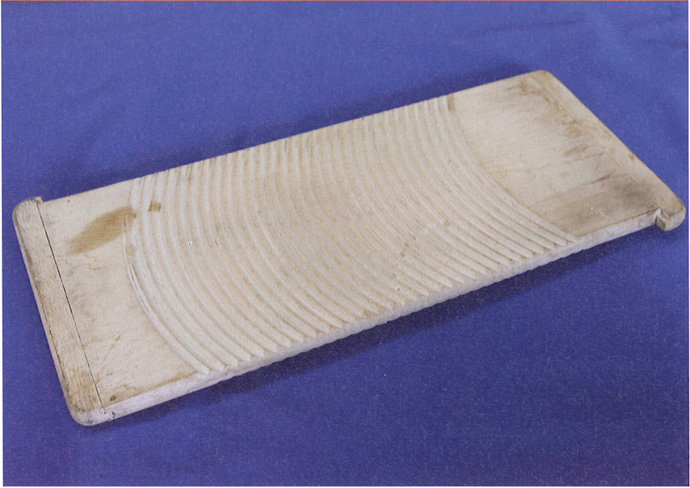| 先生が昔の道具(どうぐ)を見せてくださいました。ゆみ子さんたちは,みんなでどのように使(つか)うのか,相談(そうだん)しました。 | Our teacher showed us tools from the past. Yumiko discussed with everyone who they were used. |
| 「これは,おばあさんが子どものころに使っていた道具なんですって。」 | "This is a tool that my grandmother used when she was a child." |
| 「板(いた)にあるぎざぎざのみぞはどうしてついているのかしら。」 | "I wonder why there are ridges and grooves on the board?" |
| 「みぞは丸くついているわね。」 | "The grooves are rounded." |
| 「何に使っていたのかしら。」 | "I wonder what they used this for?" |
| 先生が見せてくださった道具は,せんたくのときに使っていた「せんたく板」という道具でした。この道具は,今でもひどいよごれを落(お)とすときに使われているそうです。 | The tool that our teacher showed us was a washboard, which is a tool used when washing clothes. This tool is used even today to wash out heavy dirt and stains. |
| 昔の道具をもっと知りたくなったゆみ子さんのクラスでは,みんなで昔の道具を調(しら)べてしょうかいしあうことにしました。 | Yumiko's class wanted to find out more about tools from the past and decided to find out more about them and introduce them. |
| せんたく板 せんたく板は,大正時代(1900年ころ)に広まりました。せっけんをつけた布(ぬの)をこの板にこすりつけました。きざんだ目がこまかい板や大きい板がありました。 | Washboard Washboards become popular during the Taisho era (around 1900). They were used by putting soap on clothes and rubbing them against the board. There were boards with narrow ridges and wide ridges. |
 昔の道具を使って,どんなくらしをしていたのでしょうか。 昔の道具を使って,どんなくらしをしていたのでしょうか。 | What kind of life did people live using these tools from the past? |


